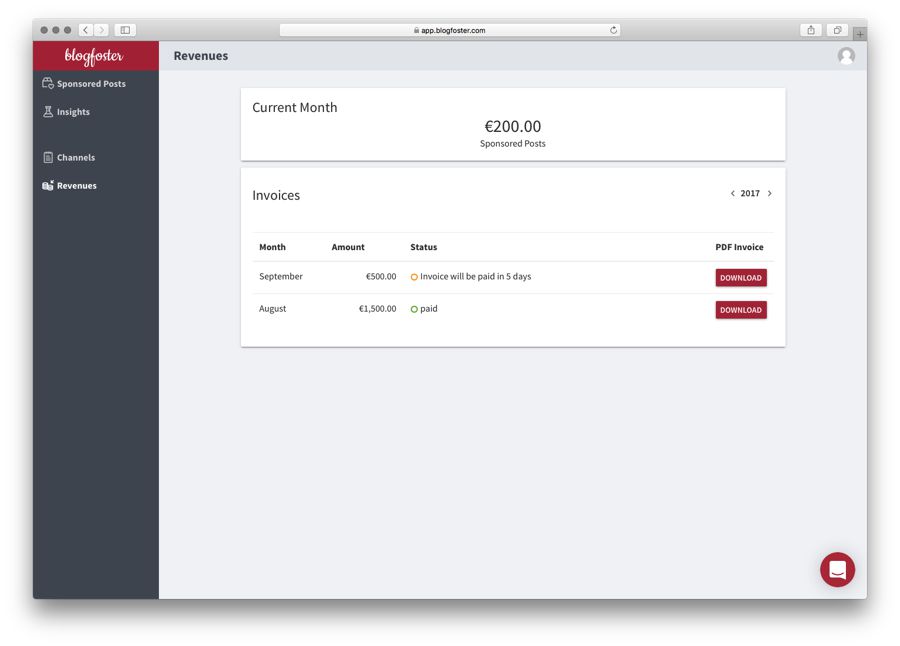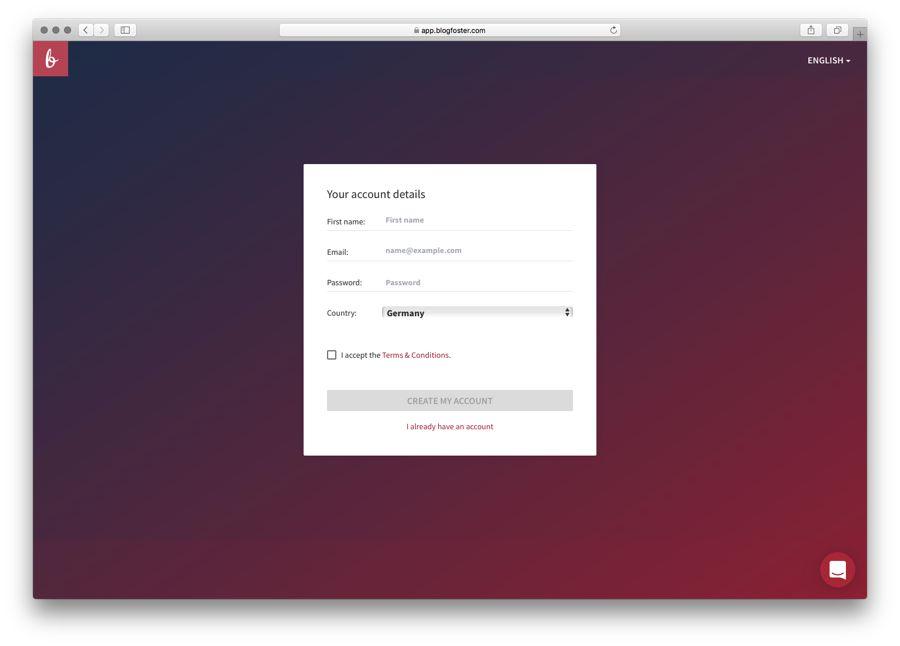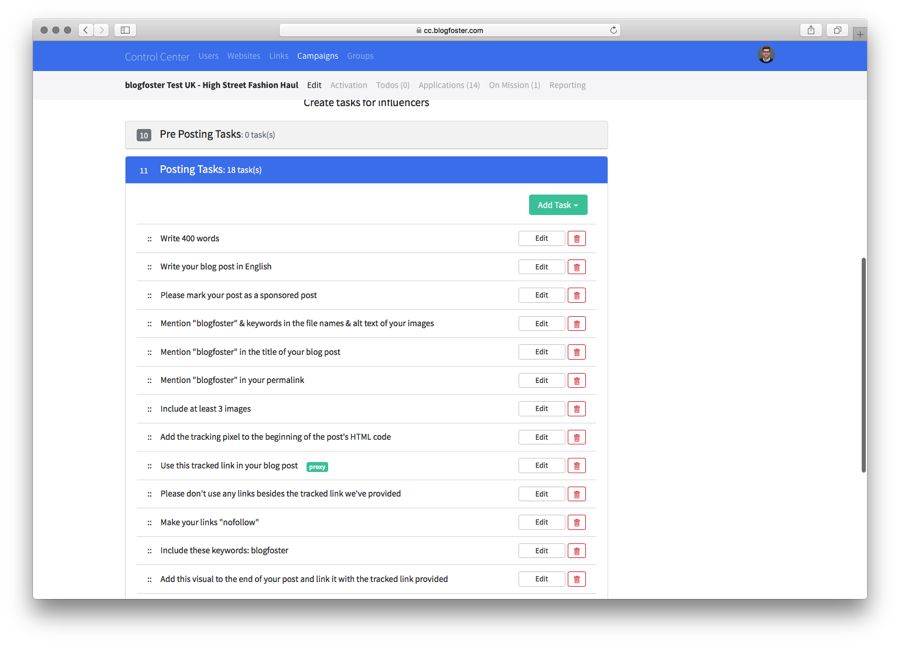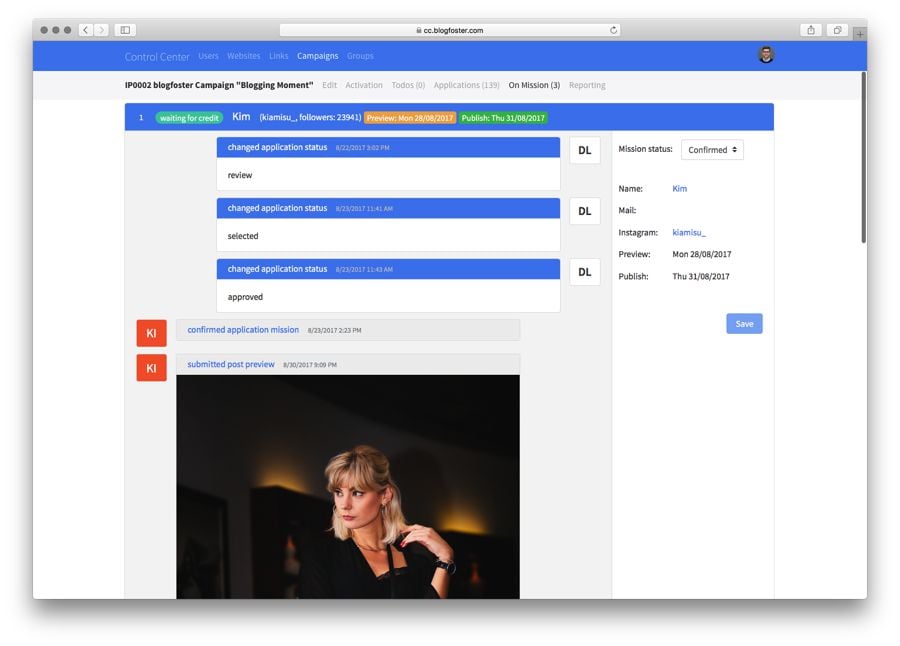
You can tell a lot about a company based on its mission statement. A good one will tell you what the aim of the business is, maybe what problem they’re trying to solve. For all the complexity that goes into Google’s business ventures, their mission statement sums it all up with a simple goal: “to organise the world’s information and make it universally accessible and useful.” A bad mission statement, on the other hand, can leave its reader with more questions than answers, but in a way that still tells you something about the company. Which brings me to blogfoster.
Founded in late 2013, the company seems to exist today through the effort of its co-founders, Jan Homann and Simon Staib. They somehow managed to ride the €25,000 seed money they received in October of that year all the way to June, 2016. That’s when their early successes paid off in the form of new funding: a multi-million dollar investment from outside investors. That money was immediately put to good use, in the form of website and software upgrades, new staff, and an expansion from their HQ in Berlin out to new offices in the UK. They’ve continued their growth at a steady rate, with over 350 brand clients and a database filled with over 32,000 bloggers and influencers.
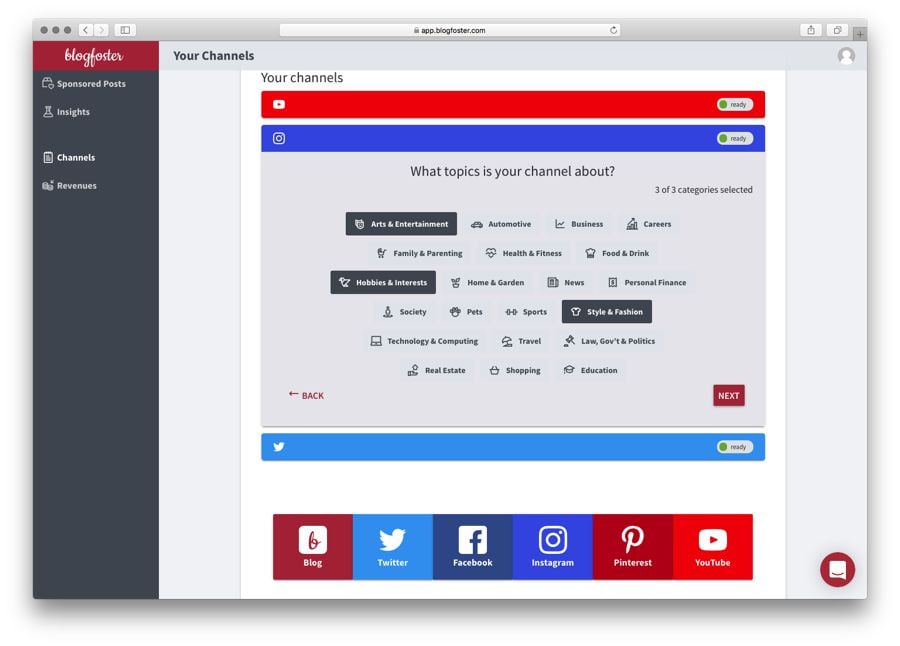
The service itself is exactly that: a service, and not really an interactive platform for brands to manage their own marketing. Customers don’t log in to see a dashboard of influencers they’re working with, nor is there a centralised way to see their sponsored posts as they go live. The technology that blogfoster is built on exists for the internal teams who are working on behalf of the brands. And while what they’re doing is working, it’s not really breaking any ground. I look at a lot of influencer marketing platforms, and the way blogfoster is running things is essentially right out of the standard playbook. That in and of itself isn’t a bad thing: I wouldn’t say a Porsche is boring to drive just because it works like any other car. And a Toyota will get you where you need to go just fine. One of those cars is a product of precision engineering and concerned with seeing how much more you can do with the same basic system; the other wants to change nothing and instead focuses on efficiency and scale. All of which brings me full circle to blogfoster’s mission statement:
Our mission is to become the leading influencer marketing company worldwide.
This sounds ambitious on the surface, but hidden in that declaration is the unspoken sentiment that blogfoster isn’t looking to do anything different. They just want to do things bigger than everyone else. So they’ve followed the blueprint and built something that works, which is a good start. But how far can that go?
Pricing
What blogfoster offers is a custom service, so pricing is going to be entirely custom, too. Working with blogfoster amounts to working with an advertising agency. You have a budget to spend on various campaigns, and so that’s what you spend. The team at blogfoster then aim to turn that budget into social content and blog posts through influencers with the most relevance, reach, and engagement. To be able to do this, and still keep a portion of the budget as payment, blogfoster needs to do something that sounds kind of like a mission statement:
Combining human and artificial intelligence to create the most successful influencer campaigns for brands.
The Details
To be honest, there aren’t a lot of details to go into here. That’s not meant to say that the blogfoster platform doesn’t do much—it does, at least as much as its competitors’ solutions. It’s just that if you’ve read any of our other reviews of similar platforms, then you already know what it does. As I’ve said, it follows a pretty common blueprint for finding influencers and activating them for campaigns.
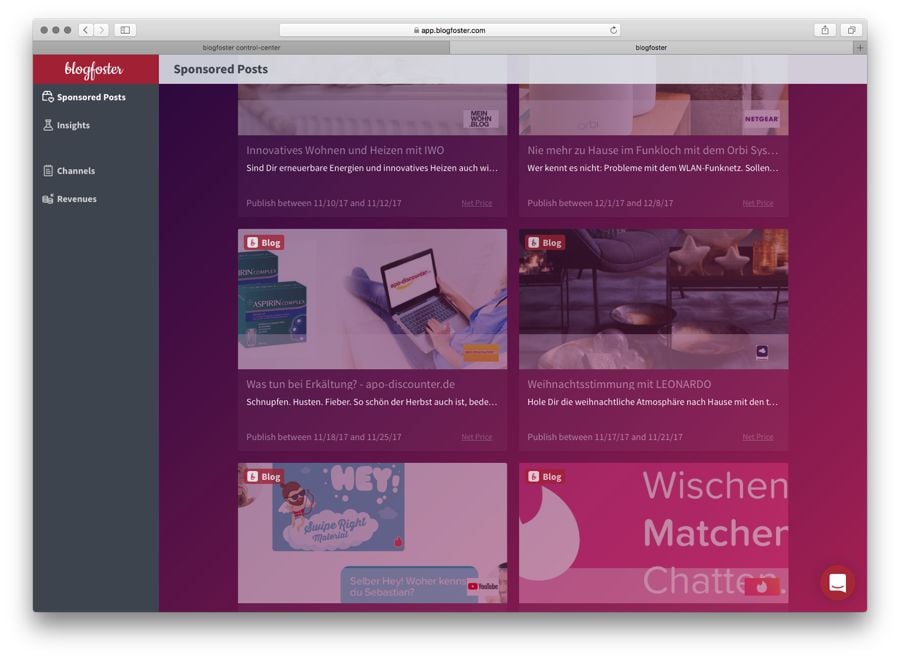
- Brand or agency comes to blogfoster with specific marketing goals in mind.
- Campaign requirements and tasks are elaborated on in briefs that are then broadcast to influencers who are already on the platform and fit a specific profile.
- Influencers create content based on the requirements.
- Once approved, influencers get paid, content reaches audiences.
- Reports are generated showing results.
- Lather, rinse, repeat.
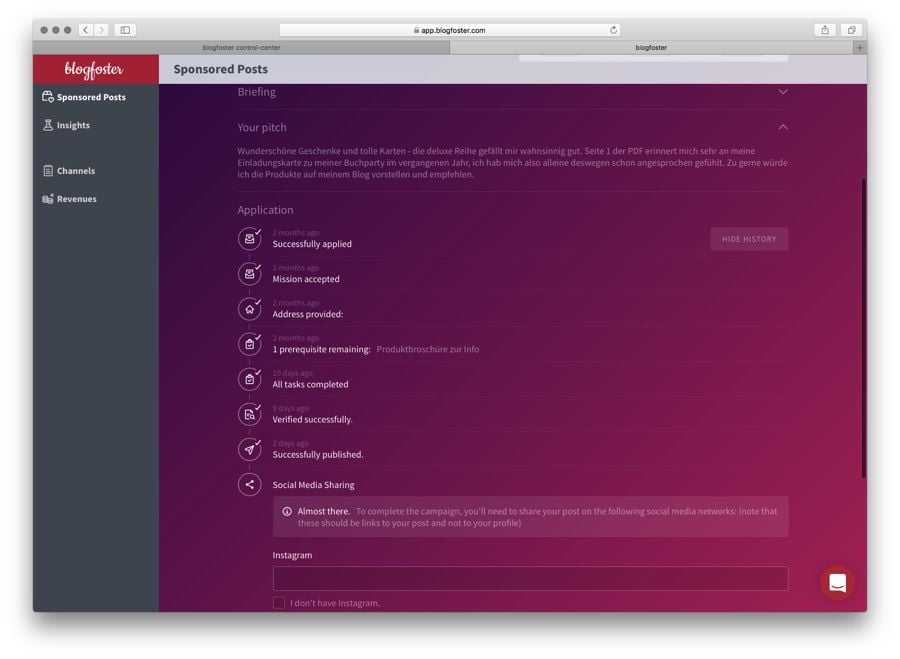
Within this framework are little variations in the way the company does things. Most important, this is not a self-service platform. The team at blogfoster are involved throughout the process, and they are the ones with access to the software. They work with clients to develop strategies and to provide guidance on how the campaign should be structured. This is a definite positive for blogfoster—self-service platforms are great for bigger brands with their own marketing departments. But there are likely many more that are trying out influencer marketing with no knowledge on how to proceed; they will need some level of expertise in shaping a successful campaign, and this where blogfoster provides its greatest value.
This is especially true when it comes to influencer discovery. The industry as a whole tends to get a bad rap because of fraud. In some cases that’s from a creator who’s endorsing things without knowing anything about them (think: Fyre Festival). More often, though, fraud is perpetrated by influencers who’ve artificially pumped up their stats by buying followers, likes, and comments—and then charging more money because of these fake numbers. Some platforms have built-in fraud detection, but the kinds of things they detect are more red flags than actual evidence. Users of these platforms must then know how to interpret these signals and data in order to verify (or, at least, plausibly suspect) whether they’re dealing with someone with an authentic audience. blogfoster has made fraud detection/prevention an integral part of their offering—Staib has been known to give in-depth presentations on this topic at industry conferences. You can tell they’ve spent a lot of time thinking about it, and that’s good news for any brand or agency looking to market through blogfoster.
It’s also the best part of their influencer discovery capabilities. When searching for influencers on behalf of clients, blogfoster can filter by category, reach, social channels, and geography. This isn’t exactly cutting edge stuff, which makes their expertise in finding authentic audiences all the more important. The reporting that comes out of the platform during and after the campaign is also fairly basic, at least as far as social sharing goes. In effect, you’ll know how big the reach was, and you’ll see what the engagement was like, but there’s little in the way of parsing down the audience data into useful demographic information.
When it comes to insights on blog posts, however, the reporting gets much more detailed, similar to the kinds of data you can get through Google Analytics. Leveraging blogs for influencer campaigns is where blogfoster shines, which shouldn’t surprise anyone given its name.
This same dynamic is seen on the influencer side as well. On their website, blogfoster tells prospective influencers,
When you sign up with us, you get our analytics tool, blogfoster Insights, for free. Once integrated, this analyses your channels, shows you your reach and provides a deeper understanding of your network.
This promise of a deeper understanding holds true for bloggers—they can see things like page views, unique visitors, and average time on the site. But again, things are lacking when it comes to social. It tells you how many followers you have, and that is literally all of the insight you get. Which, you know, isn’t an insight, since that information is something influencers already know.
None of this means that the technology at the heart of blogfoster isn’t effective, though they don’t publicise any case studies or list any brands that have successfully used their services. I’m going on the assumption that they DO have happy clients, mostly based on the fact of their recent multi-million dollar fundraising from outside investors. You don’t get that kind of capital infusion after three years in business if you don’t have some demonstrated successes.
Conclusion
With its bold mission statement of world domination in the influencer marketing industry, blogfoster declared its goal is more about its own success than its customers. That probably wasn’t their intent; of course they care about their clients and want them to succeed. But the statement is a failure of rhetoric, and I keep coming back to it because it hints at a company still figuring out exactly what it wants to do.
Blogfoster is a great solution for blog-centric influencer campaigns. That was obviously the focus when the company started, and it shows. But on the social side of things it’s much more basic, much less fleshed out. Most influencer marketing is happening on Instagram and YouTube, so if they want to be the best in the industry blogfoster is going to have to up its social game. Brands wanting to focus on social campaigns can do better elsewhere. But those looking to market through blogs—leveraging social only to drive traffic to the posts—would do well to check the company out.
-
Search
-
Management Tools
-
Interface/Ease of Use
-
Reporting/Analytics

